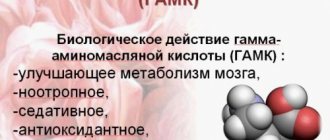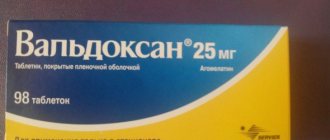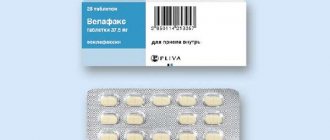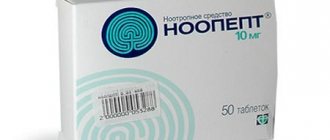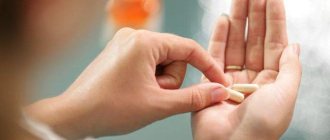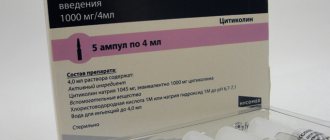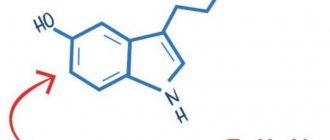Advantages and disadvantages of treating stuttering with medications
In cases where logophobia is caused by psychological trauma or is accompanied by excessive nervousness of the child, twitching, anxiety, fears and complexes towards peers, neurologists prescribe anticonvulsants, sedatives, and nootropic drugs. Such anti-stuttering medications for children can reduce the manifestation of symptoms, but it is impossible to completely get rid of the pathology only with the help of pharmaceuticals.
Pros of using anti-stuttering pills for children:
- relieve convulsive activity;
- reduce the manifestation of fear of speech;
- activate mental work;
- increase productivity.
Many modern doctors, in most cases, are against the use of tablets in the treatment of stuttering, as they have a number of disadvantages:
- some drugs with anticonvulsant components reduce concentration;
- weight gain;
- when taking tranquilizers, drowsiness appears or, conversely, aggressiveness and insomnia;
- Many people have allergic reactions to anti-stuttering pills in teenagers;
- manifestation of migraines;
- after stopping the pills, the disorder returns with renewed vigor;
- mental inhibition is observed;
- tranquilizers and strong sedatives should not be taken by adults who work in serious enterprises and drive a car;
- Many medications tend to be addictive and, to achieve an effective result, you have to constantly increase the dose.
Undesirable effects and cases of overdose
Despite the fact that in adults taking Pantogam can provoke emotional breakdowns and sleepwalking, in children the only adverse reactions observed are allergic processes in the form of conjunctivitis, rhinitis, and skin manifestations. In this case, immediate discontinuation of treatment and prescription of antihistamines is required.
If the dosage of the medication for a child is chosen incorrectly, then unwanted reactions from the brain may occur, such as:
- excitability or vice versa;
If the above described phenomena develop, it is necessary to reduce the dosage of the drug.
In case of a deliberate or accidental overdose of syrup, an increase in negative reactions from the spinal cord and brain (tinnitus, headaches) is observed.
In this case, gastric lavage and the use of adsorbents (Polysorb, Smecta, Neosmectin) are indicated. Treatment is symptomatic; there is no specific antidote.
Methods of treating stuttering with medications
The method of treating stuttering with medications is prescribed only after speech therapy and psychological correction have not had a sufficient effect. Drug therapy for logoneurosis consists of normalizing the condition and performance of the central nervous system, speech apparatus, relieving convulsions and reducing psychogenic symptoms.
The inclusion of medications in treatment is more often required in the case of stuttering in adults than in children, since it is more difficult to correct logoneurosis in older age due to the complication of the clinical picture of the disease. Before thinking about what medications to give to a child for stuttering, you need to show him to the doctor, find out the cause and type of disorder. For drug therapy in children, three types of drugs are most often used:
- sedative (calming) medications – help relieve nervous tension, relax a person, remove excess anxiety and reduce the psychological factor in the manifestation of symptoms;
- antispasmodics (anticonvulsants) – rarely prescribed, in case of certain types of disorders;
- nootropics – help normalize blood flow in the brain and increase mental clarity.
In practice, the use of drugs in the treatment of this disease can cause various effects; for some they actually help reduce the severity of symptoms of the disorder, and in some cases, on the contrary, they increase symptoms. In some cases, an osteopathic doctor can help a lot when a child stutters.
Indications for use
The medicine has a wide spectrum of action and helps with many disorders. Therefore, it is often used in narcology, neurology, pediatrics, and therapy. The following indications for use are distinguished.
- Impaired cognitive function. They occur due to trauma, neurological disorders, and organic lesions.
- Psychiatric diseases. Used in combination with drugs in the treatment of schizophrenia.
- Extrapyramidal disorders. These are Parkinson's disease, nerve fiber degeneration, Huntington's chorea, myoclonus epilepsy.
- Epilepsy. Despite the complex effect of the drug, its effect is not enough. Therefore, an anticonvulsant is additionally used.
- Psychological deviations. This includes stress, emotional overload, decreased concentration and memory.
- Disorder of the urinary system due to neurological abnormalities. For example, urinary incontinence.
- Developmental delay in children. The medicine is used for disorders of speech, motor functions, and mental activity.
- Cerebral palsy.
- Hyperkinetic type disorder. For example, with attention deficit disorder.
- Neurosis in children, accompanied by tics and stuttering.
Before prescribing the drug, anamnesis is collected. Take into account drug interactions with other drugs. Therefore, the doctor needs to know exactly the patient’s condition.
The most effective drugs for stuttering
Drugs that have proven effective for nervous disorders:
- Phenibut – blocks the supply of nerve impulses, suppresses anxiety, clears the mind;
- Tenoten – has a gentle effect on the nervous system, a drug for children, relieves anxiety and other worries. Tenoten shows good results for stuttering in children, although it is a homeopathy;
- Cogitum is similar in action to Phenibut, but is prescribed less frequently, as it has many side effects;
- Piracetam - has many positive reviews, gives good results, normalizes blood circulation in the brain, is used in combination with Phenibut;
- Grandaxin - directly affects neuroses and depression, the dosage should be selected by the doctor individually;
- Pantogam – anticonvulsant tablets; gently soothes, can be taken by children under 3 years old, often causes insomnia;
- Mydocalm - reduces muscle tone, reduces spasms;
- Cerakson - inhibits the manifestations of nervousness, improves blood circulation. Cerakson is rarely prescribed for stuttering in children.
Not all of the listed remedies can be used to treat stuttering in children. If you need to take sedatives to maintain therapy, then it is better to pay attention to herbal infusions, teas, Valerian or Motherwort.
Directions for use: instructions, dosage, contraindications, side effects
Attention! Before you think about what to drink for your child for stuttering, you should definitely consult a doctor. You cannot make decisions on the choice of drug and dosage on your own; this can harm the psyche and aggravate the disease.
Phenibut
The active ingredient is aminophenylbutyric acid. A nootropic drug that affects the central nervous system. Helps inhibit nerve impulses in the brain, improves reaction, relieves anxiety and restlessness. Often prescribed 500 mg per day for 14 days, preferably taken before lunch, to avoid sleep disturbances. Phenibut is prescribed quite often for stuttering in children; a more accurate dosage can only be obtained from a doctor.
Contraindications:
- first trimester of pregnancy, breastfeeding;
- age up to 2 years;
- individual intolerance;
- stomach ulcer;
- liver pathologies;
- car driving.
Side effects:
- drowsiness;
- nausea;
- headache;
- stomach pain;
- irritability.
The first doses of the drug may show side effects, but gradual addiction will remove them. Often unwanted symptoms appear due to an overdose.
Grandaxin
A drug with a pronounced tranquilizing effect, relieves anxiety, and does not have a sedative effect. Not addictive. Prescribed in the presence of a nervous component of the disease.
Contraindications:
- pathologies of the respiratory system;
- pregnancy and breastfeeding;
- individual intolerance to the components of the composition;
- respiratory diseases.
Side effects:
- headache;
- sleep disturbance;
- confusion;
- overexcitement;
- constipation;
- nausea;
- muscle aches;
- aggressiveness.
Grandaxin is rarely prescribed for the treatment of logonervoses; more often, doctors advise taking magnesium B6 for children who stutter; this microelement has a good effect on the nervous system as a whole.
Dosage
There are no clear instructions for taking Pantogam. Features of the daily dosage and duration of the course of use are prescribed only by the attending physician. It is he who, after examining the child, draws conclusions about the severity of the disease and calculates the course of treatment, depending on the age of the baby.
Pantogam should be taken half an hour after meals. Typically, the dosage of the drug is gradually increased in the first two weeks until it is fixed at a constant level. At the end of the treatment course, the dosage is gradually reduced.
Usually the drug needs to be taken from 1 to 4 months, in some cases treatment can reach six months. Sometimes it is necessary to repeat the treatment course, usually after 3 months or six months.
Available in two dosage forms: tablets of 0.25 g and syrup of 100 mg/ml. The syrup is a colorless or slightly yellowish liquid with a pleasant cherry flavor.
It is released in a dark glass bottle, which is packaged in a paper box.
Each bottle comes with a measuring spoon and detailed instructions for use. The active substance is hopantenic acid.
Butterscotch's blog
“The active ingredient of the drug is calcium hopantenate, which in its chemical structure can be considered as a modified molecule of pantothenic acid (vitamin B5), including a GABA residue.
According to the pharmacological properties of calcium, hopantenate also has elements of similarity with GABA and pantothenic acid. According to manufacturers, it has neurometabolic, neuroprotective and neurotrophic properties. Allegedly increases the brain's resistance to hypoxia and the effects of toxic substances, stimulates anabolic processes in neurons, combines a moderate sedative effect with a mild stimulating effect, has an anticonvulsant effect, reduces motor excitability while regulating behavior
In 1978, it was introduced into circulation in Japan for the treatment of people with mental disorders and children with delayed psycho-speech development and behavioral disorders.
By 1988, a large number of cases of severe side effects from the drug, including deaths, had accumulated. And since the early 90s of the last century, the drug has been banned for use in Japan.
The drug has never been used in other developed countries.
In PubMed you can find many works by Japanese researchers who describe clinical cases of side effects of calcium hopantenate.
Acute encephalopathy in a girl with Rett syndrome caused by taking calcium hopantenate https://www.ncbi.nlm.nih.gov/pubmed/2…,
A case of Reye's syndrome induced by calcium hopantenate https://www.ncbi.nlm.nih.gov/pubmed/1…,
A case of coma in a 3-year-old boy with autism and developmental delay after administration of calcium hopanthenate is described https://www.ncbi.nlm.nih.gov/pubmed/2...,
A report of two uremic patients who, in response to treatment with hopantenic acid, developed complaints of impaired consciousness, which was accompanied by lactic acidosis, hypoglycemia and hyperammonemia. https://www.ncbi.nlm.nih.gov/pubmed/2…,
Metabolic acidosis and hypoglycemia during calcium hopantenate administration - report of 5 patients https://www.ncbi.nlm.nih.gov/pubmed/2...,
Clinical and biochemical study of acute encephalopathy in patients treated with Ca-hopantenate. https://www.ncbi.nlm.nih.gov/pubmed/3…,
Abnormal fatty acid metabolism in patients treated with hopantenate during clinical episodes (with Rayya) https://www.ncbi.nlm.nih.gov/pubmed/2…,
A case of Reye's syndrome during the administration of calcium hopantenate https://www.ncbi.nlm.nih.gov/pubmed/2…,
Raye's syndrome in three elderly people caused by taking calcium hopantenate https://www.ncbi.nlm.nih.gov/pubmed/3...,
After the ban on the use of the drug in pediatric and adult practice in Japan, it was forgotten for 10 years.
From 1988 to 1998, the drug was not used in any country in the world. During the same period of time, there are practically no articles about the drug in PubMed.
However, since 1998, calcium hopantenate has again entered the pharmaceutical market, but this time in Russia.
Articles about the drug are appearing in PubMed again. Unfortunately, the drug study design does not meet international standards, which means we cannot take the results seriously.
I found only one multicenter, double-blind, placebo-controlled study performed by our compatriots. https://www.ncbi.nlm.nih.gov/pubmed/2…
A 2020 study on the use of Pantogam for the treatment of children with ADHD, which involved (!) 89 patients, 45 children received Pantogam, 44 received placebo. There was a trend towards an increase in the proportion of patients with positive changes (≥25% reduction in overall ADHD-DSM-IV) at the end of months 3 and 4 in the Pantogam group (treatment response rates were 66.7 and 68.9%, respectively) compared with the placebo group (response to treatment was 52.3 and 61.4%, respectively).
The study findings indicate the effectiveness of the drug (the difference with placebo is only about 10%).
However, the positive changes in reducing overall ADHD are only about 25%.
Conclusions are also drawn about the safety of the drug, but 45 children is a negligible number to draw such conclusions, especially considering the experience of Japanese colleagues.
The big question arises: why is the only multicenter, double-blind study conducted with only 89 patients, while an ordinary outpatient doctor prescribes calcium hopantenate to about a hundred children per week? Can we afford to risk the lives of children (in the literal sense of the word) for the sake of an effect that differs a placebo from a drug by only 10%? And the effect itself consists of reducing the clinical picture by only 25%? Is it possible to draw strong conclusions about the safety of the drug after analyzing only 45 patients, but at the same time knowing about the sad experience of using this drug in Japan?
I decided for myself:
As soon as the effectiveness, and most importantly the safety, of Pantogam is proven in a study involving at least 1,500 people, I will be the first to prescribe it to children, but I cannot rely on existing research.
The very idea of using nootropics is very interesting and even noble. But in modern realities it is a little fantastic. A pill for improving memory or improving cognitive functions is the same as a pill for easily doing the splits, doing cartwheels, or even lifting a 500 kg barbell. We understand perfectly well that in order to learn how to do the splits, you need to stretch every day, in order to do a cartwheel, you need to train every day. Likewise, in order to have a good memory, you need to train it every day, memorize facts, poems, songs, in order to start talking, you need to get into an environment where they will talk to you, initiate speech. In order to learn to articulate correctly, you need to use speech and talk every day, and if by a certain age the pronunciation of sounds suffers, work with a speech therapist. Unfortunately, a magic pill has not yet been invented for speech, for the mind, for doing the splits or lifting weights.
Sincerely, pediatric neurologist Ostroverkhova A.M.,”
Folk remedies
Since stuttering is not a new thing for humanity, people have long known how to get rid of this illness. For this, herbal infusions from the environment were used, so the following recipes are available to everyone, all you have to do is go outside the city.
The herbs of chamomile, nettle, valerian and mint are poured into a small vessel and filled with hot water, then left for 15 minutes. The tincture is filtered and drunk half a glass twice a day.
Herbs of mint, strawberry and fireweed leaves, raspberry shoots, hawthorn fruits, nettles, oat straw, caraway fruits - all this is mixed and poured with hot water, then kept on low heat for a couple of minutes and allowed to brew for an hour and a half. Drink 50 ml of the decoction five times a day.
Pagoklon
Pagoklon is not distributed in the CIS, and it can only be ordered from the USA. There is nothing to say about the cost of such a drug, since the entire price will mostly remain for shipments from America.
Noofen
Adults are given this drug at 250-500 mg. divided into three doses. Treatment lasts for three weeks. The drug is freely available in all pharmacies in the country at a price of 600 rubles per 100 mg.
Anvifen
Treatment with the drug usually lasts for three weeks. Every day the patient should drink 400 mg of medication. For children, 250 mg per day is enough. Anvifen can be purchased at any pharmacy at a price of 230 rubles.
Dosage regimen
Pantogam syrup is allowed to be taken by children from birth. It should be taken 30 minutes after feeding. Since the drug has a nootropic effect, it is better to take it in the first half of the day.
The pediatrician selects the dosage and duration of treatment for each child individually, depending on the pathology of the central nervous system and age:
- in children under 1 year of age,
the daily dose can vary from 5 to 10 ml (500-1000 mg); - up to 3 years
from 5 to 12.5 ml; - up to 7 years
from 7.5 to 15 ml; - schoolchildren
from 10 to 20 ml.
A single dose for children of any age should be 2.5-5 ml, the maximum daily dosage is 3 g.
The course of treatment can vary from 1 to 4 months, and sometimes up to six months. The next appointment is acceptable after 3-6 months.
During the first 7-12 days of use, the dose should be gradually increased, then within 15-40 days the drug should be taken at the maximum recommended dosage, then over the course of a week the daily dose should be gradually reduced until complete withdrawal.
Syrup dosages depending on the disease:
During long-term treatment with Pantogam syrup, you should not take others at the same time, since the negative effects of each of them may increase.
Pantogam is a nootropic drug similar in chemical composition to the natural mediator of the nervous system, gamma-aminobutyric acid. The active substance is hopantenic acid. Why is Pantogam prescribed to adults? It is used to treat alcohol intoxication of the nervous system, hyperactivity syndrome in children, as well as for prevention. Suppresses convulsive activity in episyndrome and other pathologies of the nervous system.
Side effect
Adverse reactions presented below are listed according to damage to organs and systems and frequency of occurrence. The frequency of occurrence is defined as follows: very common (≥1/10), common (≥1/100 and <1/10), uncommon (≥1/1000 and <1/100), rare (≥1/10,000 and < 1/1000), very rare (<1/10,000, including isolated cases).
From the immune system: very rarely - allergic reactions (rhinitis, conjunctivitis, allergic skin reactions).
From the nervous system: very rarely - hyperexcitation, headache, dizziness, noise in the head.
Mental disorders: very rarely - lethargy, lethargy, sleep disturbances, drowsiness.
If disorders of the immune system occur, the drug is discontinued. In other cases, reduce the dose of the drug.
Related posts:
- Antibiotics: what they are and why they are needed Antibiotics are medications used to prevent and treat bacterial…
- Raynaud's disease and traditional medicine Raynaud's disease refers to the condition of insemination of the fingers and toes. Gradually…
- What is an antiseptic Antiseptic (lat. anti - against, septicus - rotting) is...
- Can schizophrenia be treated with folk remedies? Schizophrenia is a mental disorder that is accompanied by fundamental disturbances of perception...

